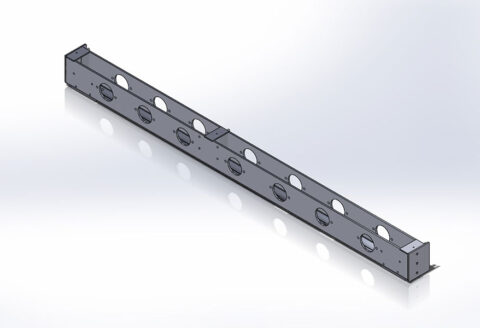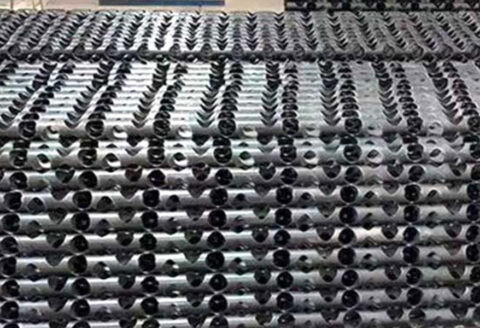In winter, the ambient temperature is very low. If there are no protective measures for the welding operation of steel components, it will have a significant impact on the welding quality of steel components, such as low-temperature welding, which will embrittle the welding, and will also make the cooling rate of the weld and the heat-affected zone of base metal. Accelerating, it is easy to produce hard structures and increase brittleness. This is very important for the welding of low-alloy steel commonly used in building steel structures. Contact with people is very dangerous.
Therefore, the winter welding construction must be carried out in strict accordance with the process requirements, and blind welding is not allowed.
Requirements for welding materials
- Strictly manage the welding material warehouse, the welding rod must be dried according to the standard, the number of drying should not exceed 2 times, and the exposure time in the air should not exceed 2 hours. If there is no oven on site, it is necessary to apply for the equipment in time and arrange for a dedicated person to bake and deliver.
- The welder collects the welding rods with a heat preservation tube, and the number of electrodes each time should not exceed half a day; the cover of the heat preservation tube must be covered during the welding process, and the heat preservation tube remains live; for positioning welding, only one electrode can be used at a time; one used for welding There should be no more than three electrodes. It is strictly forbidden to expose or damp the laser cutting china materials. If the welding material is found to be damp, it must not be used again.
- If the welding wire is not used up within four hours, it should be returned to the solder warehouse for storage, and it is not allowed to stay on the wire feeder.
- The purity of carbon dioxide for gas shielded welding is not less than 99.9% (volume ratio), and the water content is not more than 0.005% (weight ratio). When using a new bottle of gas, you must turn it upside down for 24 hours, and then open the valve to drain all the water to prevent freezing. When the high pressure of the gas in the bottle is lower than 1MPa, the machine should be stopped. Before welding, check the indication on the gas pressure gauge, then check the gas flow meter and adjust the gas flow. The mouth of the bottle must be connected to a heating device when in use.
- Cylinders must be stored in an environment above 0°C. When using bottled gas, stop using it when the gas pressure in the bottle is lower than 1n/mm2. When using below freezing, check whether the bottle mouth is frozen or blocked.
General requirements before welding
- Remove water, scale, rust and oil on the surface of the steel to be welded.
- The relative humidity of the welding area should not be greater than 90%.
- When the surface of the weldment is wet or covered with ice and snow, heating and dehumidification measures should be taken.
- Both ends of the main weld of t-joint, cross joint, angle joint and butt joint must be equipped with arc ignition plate and arc ignition plate. The material should be the same as the base material to be welded, and the groove form should be the same as the weld to be welded. It is forbidden to use other materials such as arcing board, lead-out board, etc.
- The lead-out length of the weld of manual arc welding and gas shielded laser cutting should be greater than 25mm. The width of the running and running plate should be greater than 50mm, the length should be 1.5 times the thickness of the plate and no less than 30mm, and the thickness should be no less than 6mm; the overcurrent length of the non-manual arc welding seam should be greater than 80mm. The width of the arc ignition plate and the arc ignition plate should be greater than 80mm, the length should be twice the thickness of the plate and not less than 100mm, and the thickness should not be less than 10mm.
- After welding, use flame cutting to remove the pilot arc board and pilot arc board, and polish. It is not allowed to knock down the running board and running board on the board with a hammer.
Winter welding measures (welding ambient temperature-below 5℃)
1. Set up a protective shed:
During outdoor construction, when the ambient temperature is lower than -5°C, a protective shed must be set up in the welding area to increase the temperature of the welding environment and prevent wind and rain.
2. Preheating before welding:
The weld should be preheated before welding, and the preheating area should be located on both sides of the welding groove. When necessary, an accompanying preheating method should be used to ensure the preheating temperature and interlayer temperature.
The heating temperature is 80 ~ 150℃, and the preheating range on both sides of the weld is 1.5T (t is the plate thickness), not less than 100mm. The utility model uses a far-infrared thermometer for temperature measurement, and the temperature measurement point is 75 mm from the edges of the two notches and on two straight lines parallel to the center of the welding seam.


